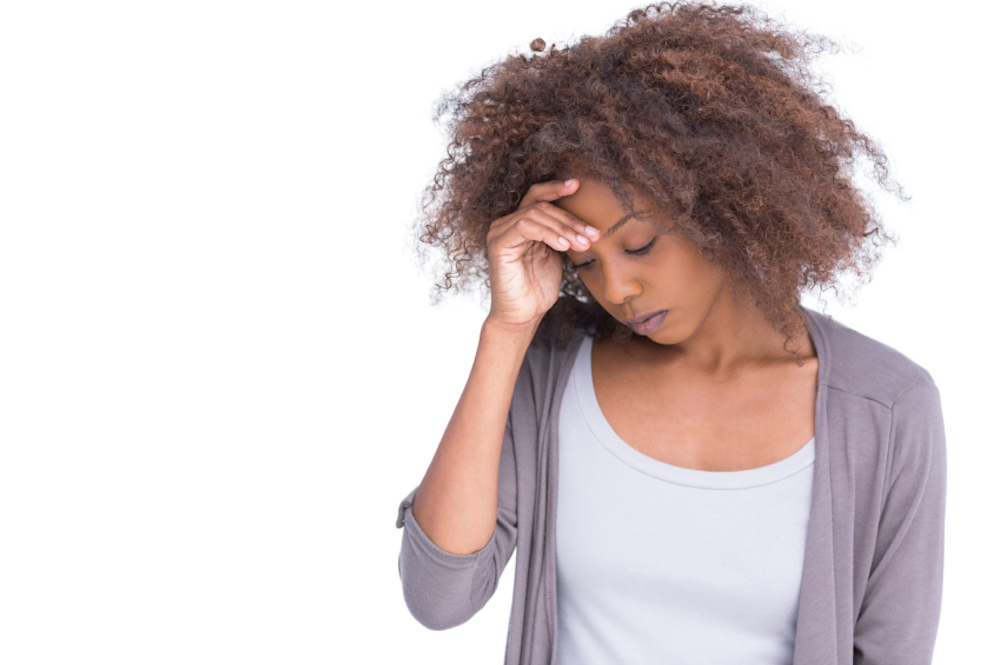If you are experiencing a thinning hairline, or thinning hair in general, there are a large number of health conditions and/or lifestyle choices that could be the cause. In this article I will be talking specifically about traction alopecia, a form of gradual hair loss stemming from a constant external force on the hair follicles.
The early signs of traction alopecia are usually noticeably thinner hair along the hairline and nape. Any hair style that causes excessive strain on the hair and scalp (i.e. buns, puffs, braided extensions, cornrows, weaves) can cause this condition. Because African-American women tend to wear these type of styles many of us suffer from this form of hair-loss. Below I will outline important actions to take to begin recovering from traction alopecia.
1. SEEK OUT A PROFESSIONAL
It’s a good idea to talk to your doctor if you are experiencing hair loss because there could be an underlying health issue. When I personally experienced thinning edges I did some research and I came to my own conclusion that it was traction alopecia given how frequently I wore my hair in braided extensions and tight buns. However since I am no medical professional I still made a trip to the dermatologist to confirm my self-diagnosis. Talking to a professional will help you gain an understanding of how severe the damage is and what your treatment options are.
2. ELIMINATE HARMFUL STYLING PRACTICES IMMEDIATELY
When dealing with traction alopecia eliminating harmful styling practices is the most crucial action to take. The longer you wear styles that cause tension to your hair follicles the more difficult it will be to recover. Long term stress to your hair follicles can cause permanent damage. I recommend switching to loose styles such as braid-outs, twist outs, perm rods & roller sets for at least 6-8 months after noticing your thinning hair.
It was extremely difficult for me to stop wearing braided extensions and buns (especially because I was transitioning to natural hair), just as giving up some of your favorite styles (sleek buns, high puffs, edges on fleek) may be difficult for you. Trust me the sacrifice is well worth it. Several months of loose hairstyles outweighs the risk of permanent hair loss.
3. PRACTICE RESTRAINT WHEN DEVELOPING A REGIMEN TO PROMOTE GROWTH
If you google how to recover from thinning edges you will likely find a ton of articles offering advice similar to this one. I know because I’ve been there. My advice is to make sure to first refer to points 1-3 of this article before you commit to a hairline recovery regimen. I agree with most articles that suggest scalp massages with carrier oils (olive oil, Jamaican black castor oil) mixed with a few drops of an essential oil (tea tree, peppermint, lavender) to stimulate growth.
However since essential oils are very potent, definitely test out the oil mixture on a small part of your scalp before you commit weekly or daily use. Also keep in mind when dealing with this fragile area less is more. You want to be extremely gentle when tending to the affected area. You want styles with zero tension on your hairline and minimal manipulation. When washing and massaging the affected area you also want to be gentle as possible, meaning no vigorous scrubbing or scratching.
4. BE PATIENT
I want you to know that there is no magic formula that will quickly regrow your hair no matter what anyone tries to sell you. You will have to practice patience and commit to making the necessary changes in your haircare regimen if you want to see real results. It will be challenging, but I know you can do it.
Bonus: I also highly recommend you watch this video from The Green Beauty Channel. She breaks down traction alopecia causes and remedies in great detail. Enjoy!








